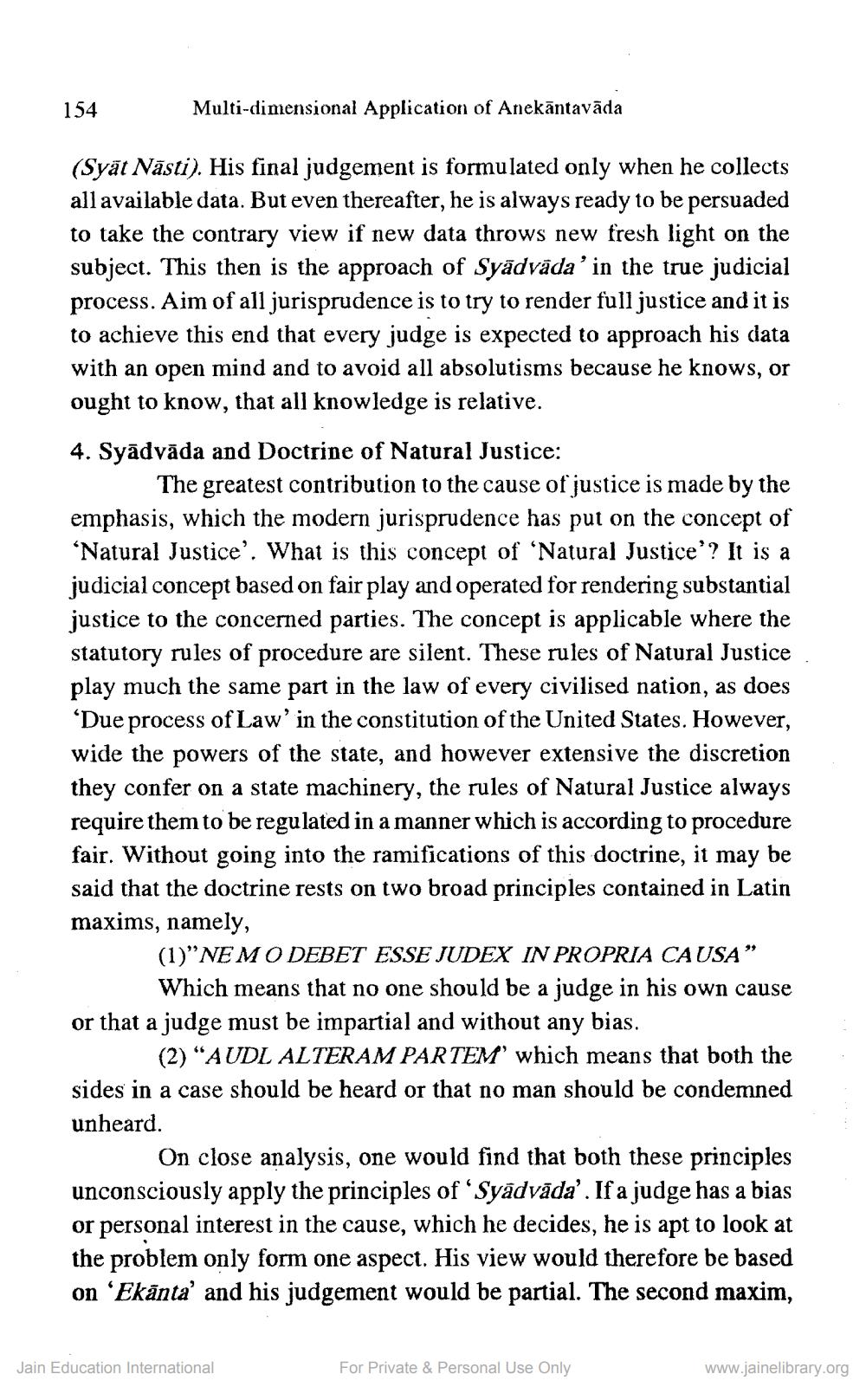________________
154
Multi-dimensional Application of Anekāntavāda
(Syāt Nāsti). His final judgement is formulated only when he collects all available data. But even thereafter, he is always ready to be persuaded to take the contrary view if new data throws new fresh light on the subject. This then is the approach of Syādväda' in the true judicial process. Aim of all jurisprudence is to try to render full justice and it is to achieve this end that every judge is expected to approach his data with an open mind and to avoid all absolutisms because he knows, or ought to know, that all knowledge is relative.
4. Syādvāda and Doctrine of Natural Justice:
The greatest contribution to the cause of justice is made by the emphasis, which the modern jurisprudence has put on the concept of 'Natural Justice'. What is this concept of 'Natural Justice'? It is a judicial concept based on fair play and operated for rendering substantial justice to the concerned parties. The concept is applicable where the statutory rules of procedure are silent. These rules of Natural Justice play much the same part in the law of every civilised nation, as does “Due process of Law' in the constitution of the United States. However, wide the powers of the state, and however extensive the discretion they confer on a state machinery, the rules of Natural Justice always require them to be regulated in a manner which is according to procedure fair. Without going into the ramifications of this doctrine, it may be said that the doctrine rests on two broad principles contained in Latin maxims, namely,
(1)"NEM O DEBET ESSE JUDEX IN PROPRIA CAUSA”
Which means that no one should be a judge in his own cause or that a judge must be impartial and without any bias.
(2) "AUDL ALTERAM PARTEM' which means that both the sides in a case should be heard or that no man should be condemned unheard.
On close analysis, one would find that both these principles unconsciously apply the principles of 'Syädvāda'. If a judge has a bias or personal interest in the cause, which he decides, he is apt to look at the problem only form one aspect. His view would therefore be based on 'Ekānta' and his judgement would be partial. The second maxim,
Jain Education International
For Private & Personal Use Only
www.jainelibrary.org




